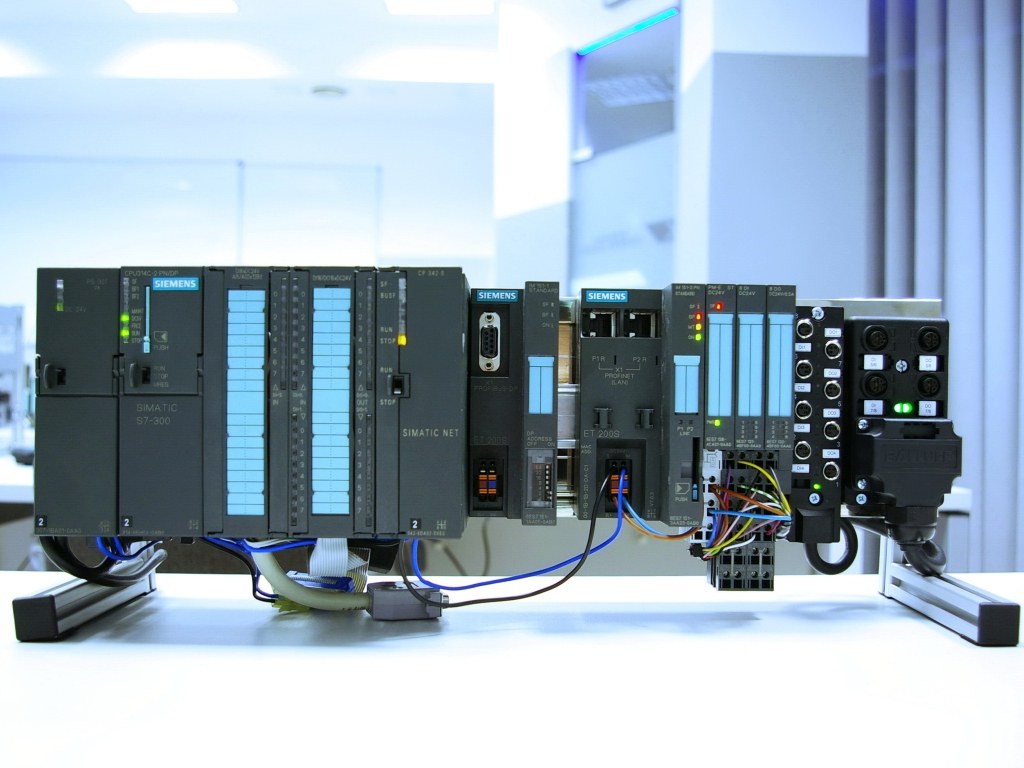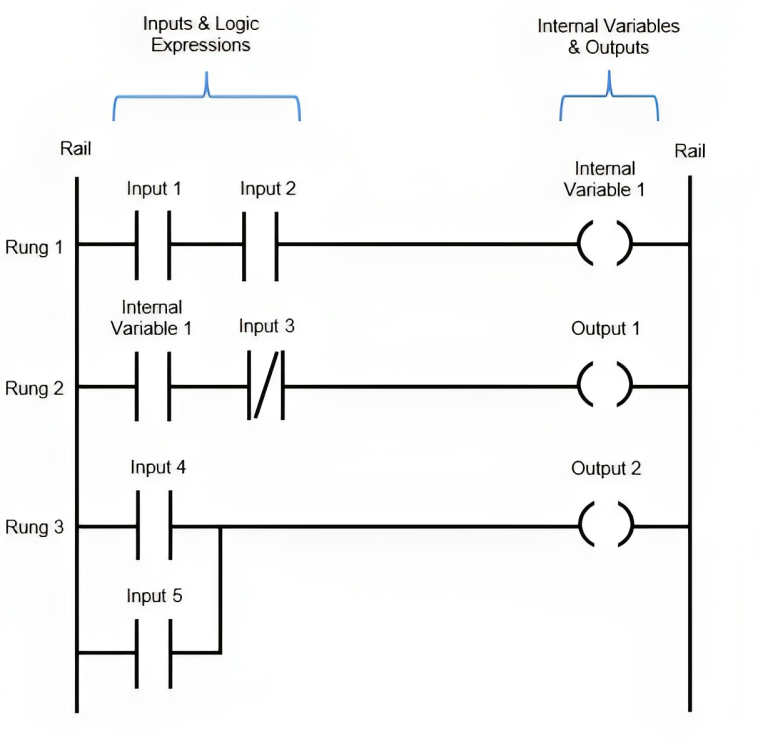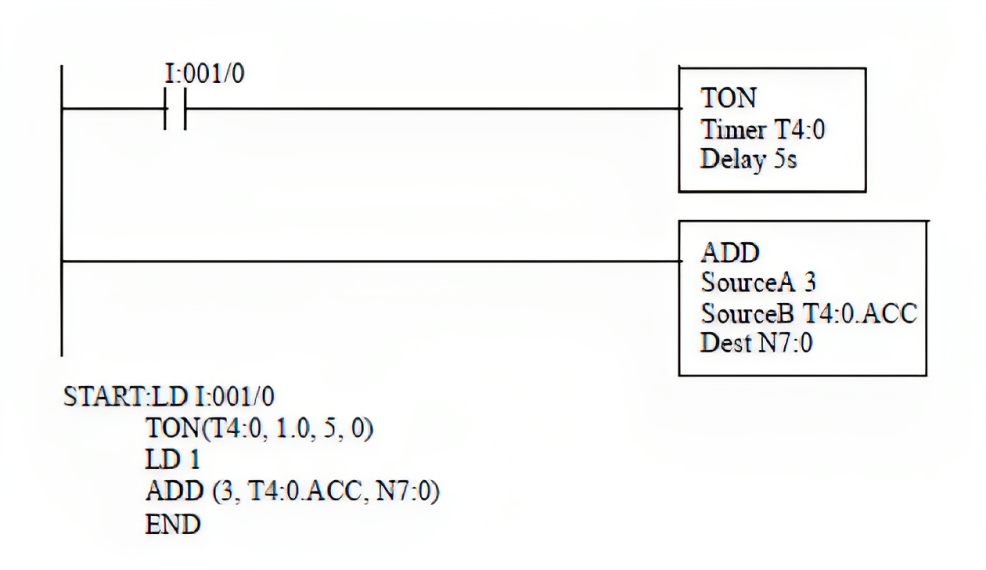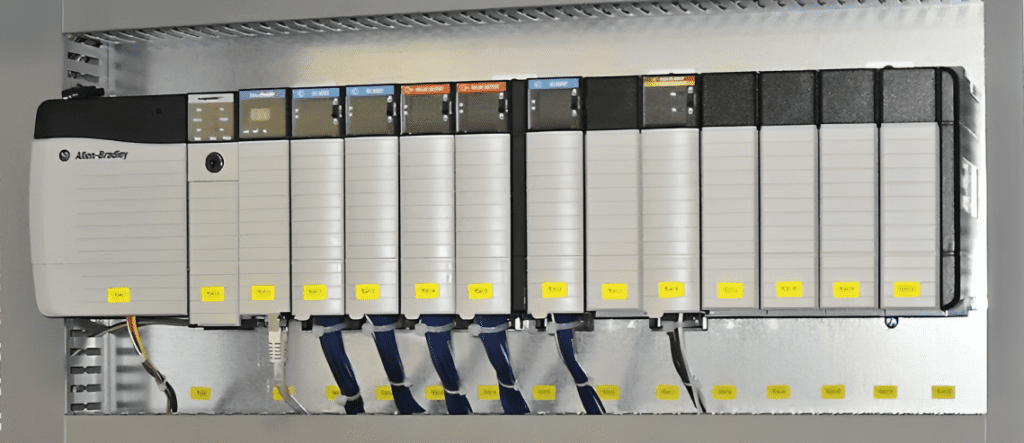PLC programming languages play a crucial role in industrial automation. PLC is an electronic device. This electronic device is instrumental in controlling machines and contributes significantly to the manufacturing of various everyday products. In this blog post, we will provide a brief overview of PLC programming languages to help you understand how PLC programming works.
The Significance of PLC and Its Role
PLC is used to control any type of manufacturing or industrial process. It is a computer-based electronic device that handles input and output signals. Its primary role is to receive signals from sensors, process them, and then control output devices. Through PLCs, complex industrial processes can be systematically controlled.

PLC Programming Languages
Various programming languages are used to write PLC programs. Understanding and writing in these languages are crucial skills for a PLC programmer. Let’s explore some key PLC programming languages:
1. Ladder Logic (LL):
Ladder Logic is the oldest and most popular language for PLC programming. Its distinctive feature is its structure, which resembles a ladder. Horizontal lines represent rungs, and vertical lines represent coils and contacts.
Ladder Logic is easy to understand, especially for those familiar with electrical diagrams.
In this language, input and output are represented similar to relay logic. Reading a Ladder Logic diagram helps easily comprehend how a signal is being processed.

2. Structured Text (ST):
Structured Text is a high-level language closely related to traditional programming languages like C or Pascal. It is used to define complex algorithms.
ST allows the use of variables, loops, and conditional statements, making it easier to write organized and structured code.
3. Function Block Diagram (FBD):
Function Block Diagram is another ancient PLC programming language, known for its graphical representation. Functions are represented in blocks, and by connecting these blocks, a program is created.
FBD is used for designing complex control systems, especially when handling multiple inputs and outputs. Its visual elements assist in understanding for beginners.

4. Instruction List (IL):
Instruction List is a low-level programming language that closely resembles assembly language. It contains specific instructions that directly interact with PLC hardware.
IL is used when direct control of PLC’s internal operations is required. The commands are written straightforwardly, but it may be a bit challenging to write.

Choosing the Right PLC Languages When and Why?
Several considerations should be kept in mind when choosing PLC programming languages:
- Project Complexity: For simple projects requiring basic functions, Ladder Logic may be suitable. However, for implementing complex algorithms, using Structured Text or Function Block Diagram is recommended.
- User Familiarity: Some programmers prefer Ladder Logic because it resembles electrical diagrams, which they find easy to understand. Others may opt for high-level languages like Structured Text.
- Hardware Compatibility: Some PLCs support specific languages. It is essential to ensure that your chosen language is compatible with your PLC.
The choice of PLC programming language depends on your project’s requirements and your personal comfort.

In Conclusion
PLC programming languages are a crucial part of industrial automation. While these languages may seem different, they all share a common goal—systematically and efficiently controlling machines and industrial processes. Therefore, if you are stepping into PLC programming, it is essential to understand and learn these languages thoroughly.
These languages may differ from each other, but they all serve the same purpose – to control machines and industrial processes systematically and efficiently. If you are venturing into PLC programming, it’s crucial to understand and learn these languages thoroughly.
This blog post provides a brief insight into some prominent PLC programming languages, but it’s just the beginning. PLC programming is a field that is continually evolving, with new technologies bringing in new languages. So, if you haven’t started your journey in this field yet, now is the right time to begin!
Thank you! 🤖🛠️
Our Face Book Page Our You Tube Channel Our Home Page